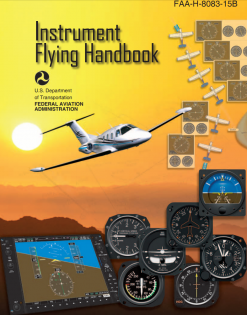This Instrument Flying Handbook is designed for use by instrument flight instructors and pilots preparing for instrument
rating tests. Instructors may find this handbook a valuable training aid as it includes basic reference material for knowledge
testing and instrument flight training. Other Federal Aviation Administration (FAA) publications should be consulted for
more detailed information on related topics.
This handbook conforms to pilot training and certification concepts established by the FAA. There are different ways of
teaching, as well as performing, flight procedures and maneuvers and many variations in the explanations of aerodynamic
theories and principles. This handbook adopts selected methods and concepts for instrument flying. The discussion and
explanations reflect the most commonly used practices and principles. Occasionally the word “must” or similar language
is used where the desired action is deemed critical. The use of such language is not intended to add to, interpret, or relieve
a duty imposed by Title 14 of the Code of Federal Regulations (14 CFR).
All of the aeronautical knowledge and skills required to operate in instrument meteorological conditions (IMC) are detailed.
Chapters are dedicated to human and aerodynamic factors affecting instrument flight, the flight instruments, attitude instrument
flying for airplanes, basic flight maneuvers used in IMC, attitude instrument flying for helicopters, navigation systems, the
National Airspace System (NAS), the air traffic control (ATC) system, instrument flight rules (IFR) flight procedures, and
IFR emergencies. Clearance shorthand and an integrated instrument lesson guide are also included.
This handbook supersedes FAA-H-8081-15A, Instrument Flying Handbook, dated 2007.
- 20 Jul
- 2019
- ByJulia Handel
- Instrument Flying Handbook
- (0) Comment



